Oslo is the capital city of Norway and it features a rich blend of history, culture, and natural beauty. While it's not as big as other European cities, it has a lot of things to offer. Because of its size, it's pretty easy to explore and if you're staying at a hotel in the city center, many tourist attractions are within walking distance.
In one of my recent posts, I listed the top five museums in Oslo. This time, I'll be listing the other attractions to visit in this city. And remember when I said that the cost of living in Oslo is high? Well, the best part is that all these places are free to visit. So while you end up spending more on food and accommodations in this city, you get to save on sightseeing.
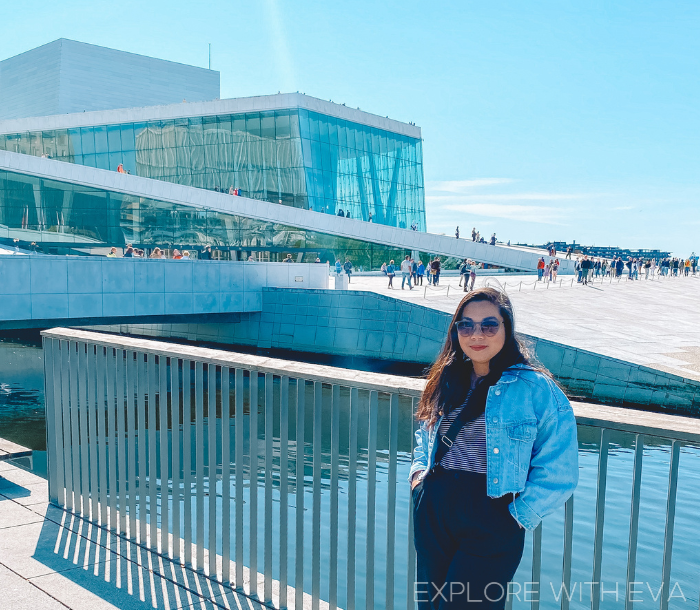 |
| Oslo Opera House |
Free Attractions to Visit in Oslo
1. The Royal Palace
The Royal Palace in Oslo, known as "Det kongelige slott," stands as an iconic symbol of Norwegian royalty. Located at the top of Karl Johans gate, the city's main street, the palace is the official residence of the Norwegian monarch.
Surrounded by the picturesque Slottsparken, the Royal Palace is open to the public during the summer months, allowing locals and tourists to explore the beautiful park grounds and witness the Changing of the Guard ceremony, which happens daily. While the Royal Palace serves as the primary residence for official events and functions, the royal family's daily life takes place at the more private Skaugum Estate.
2. Akershus Fortress
Akershus Fortress, or "Akershus festning" in Norwegian, is a medieval fortress and castle that occupies a strategic position on the eastern side of Oslo's harbor. It's characterized by its sturdy stone walls, towers, and ramparts, offering panoramic views of Oslo and the Oslo Fjord. It has served various purposes, including as a royal residence, a military stronghold, and a prison.
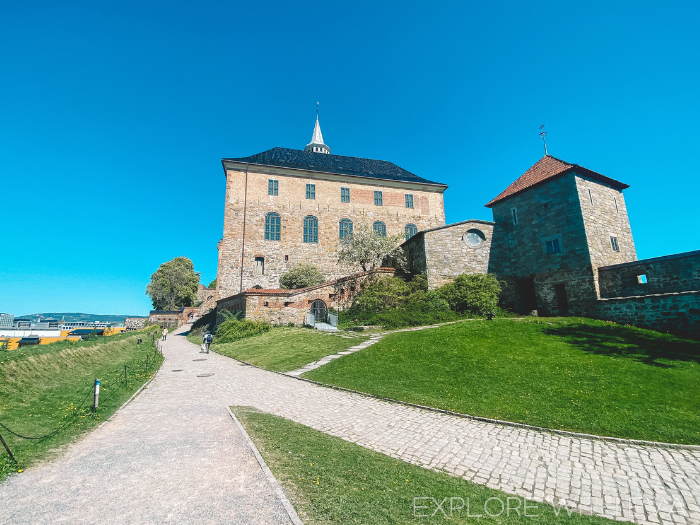 |
| Akershus Fortress |
Today, Akershus Fortress is a popular historical and cultural attraction. Visitors can explore the medieval castle, walk along the fortress walls, and visit the various buildings within its complex. It's also a venue for cultural events and ceremonies.
3. Vigeland Park
Vigeland Park, known as "Vigelandsparken" in Norwegian, is the world's largest sculpture park created by a single artist, Gustav Vigeland. Located in the Frogner neighborhood, the park is a masterpiece that showcases the life's work of the renowned sculptor.
The park is famous for its collection of over 200 bronze and granite sculptures, all designed by Vigeland. The sculptures depict the human experience in various forms, capturing emotions, relationships, and the different stages of life. One of the central features of the park is the Monolith, an imposing column carved from a single block of granite and adorned with intricate human figures. The iconic sculpture of "The Angry Boy" and the "Wheel of Life" fountain are among the notable pieces that contribute to the park's artistic richness.
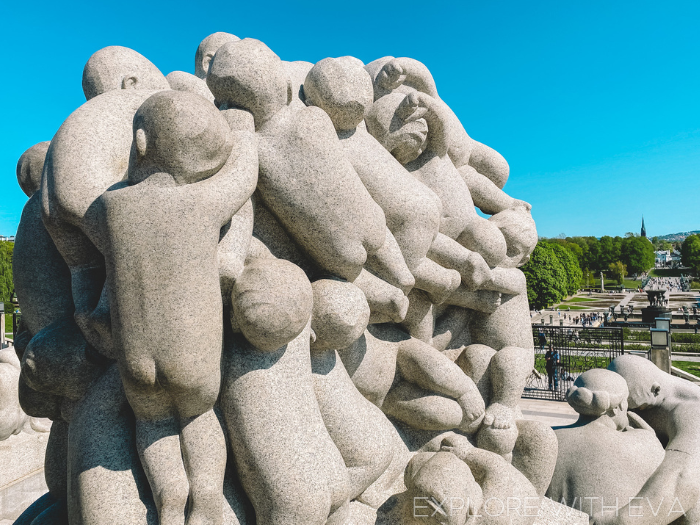 |
| one of the sculptures in Vigeland Park |
4. Oslo Opera House
The Oslo Opera House, or "Operahuset" in Norwegian, is a striking architectural landmark located on the waterfront of the Oslo Fjord. Designed by the renowned Norwegian architecture firm Snøhetta, the opera house was officially opened in 2008.
Its distinctive feature is its sloping roof, which extends from the ground level to create a large plaza that invites visitors to walk up and enjoy panoramic views of the city and the fjord. This design allows for a seamless connection between the building and the surrounding environment. Aside from being a hub for cultural performances, it's also a popular destination for locals and tourists alike.
5. Aker Brygge
Aker Brygge is a popular waterfront district, known for its vibrant atmosphere, shopping, dining, and entertainment options. It features modern architecture, picturesque harbor views, and a lively promenade along the Oslo Fjord. The area is home to a diverse range of shops, boutiques, galleries, and restaurants, making it a favorite destination for locals and tourists alike.
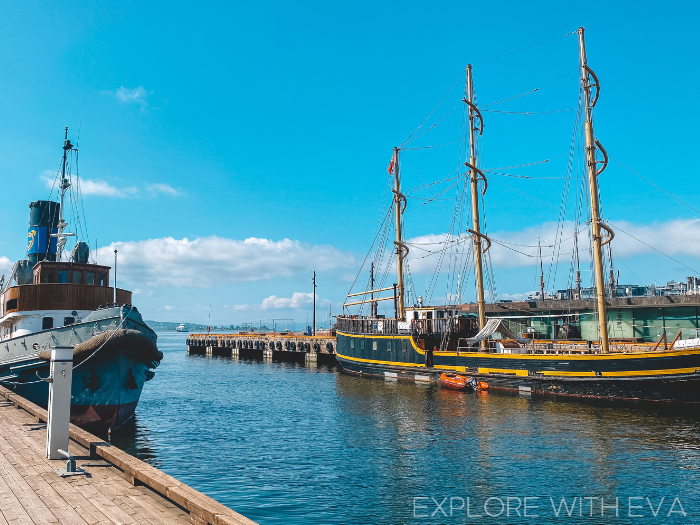 |
the harbor in Aker Brygge |
The waterfront promenade is a nice place for a stroll with outdoor seating areas where visitors can relax and enjoy the scenery. During the warmer months, it's common to find outdoor events, street performers, and various cultural activities taking place in this bustling district.
6. Tjuvholmen
Tjuvholmen is a contemporary and upscale neighborhood adjacent to Aker Brygge in Oslo, Norway. It has become a hub for modern art, luxury living, and sophisticated dining. The Astrup Fearnley Museum of Modern Art, designed by architect Renzo Piano, is a prominent landmark in the area. The museum showcases a diverse collection of contemporary art, making it a must-visit destination for art enthusiasts.
The neighborhood also offers a variety of upscale restaurants, cafes, and boutiques, contributing to its reputation as a fashionable and chic district. Tjuvholmen's waterfront promenade features outdoor sculptures and provides stunning views of the fjord.
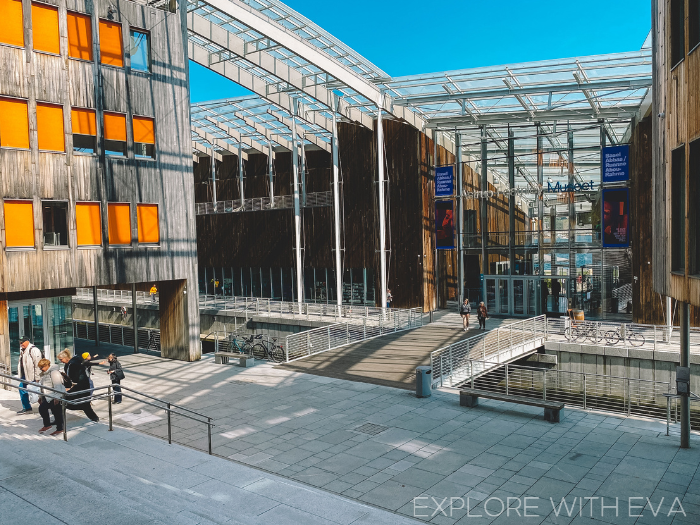 |
| modern architecture in Tjuvholmen |
7. Deichman Bjørvika
Deichman Bjørvika is the main branch of the Deichman Library. Yup, you read that right - I'm including a library on this list, and here's why. It stands as a modern architectural masterpiece with its sustainable and innovative design. The exterior is remarkable and the interiors are just as stunning.
This library offers an open and welcoming space for the community. It's characterized by its spacious interior, large windows, and a rooftop terrace that offers panoramic views of the city and the Oslo Fjord. It's also a cultural center that hosts various events, exhibitions, and activities for all age groups.
If you're planning a trip to Norway's capital city, then these places are worth the visit. Plus, they're free! And if you booked a hotel in the city center, then it's easy to go to these places as they're all within a 20-minute walk. I'd recommend using Google Maps to help you navigate the city.
I hope you find this post helpful. If you have any questions, drop a comment below!
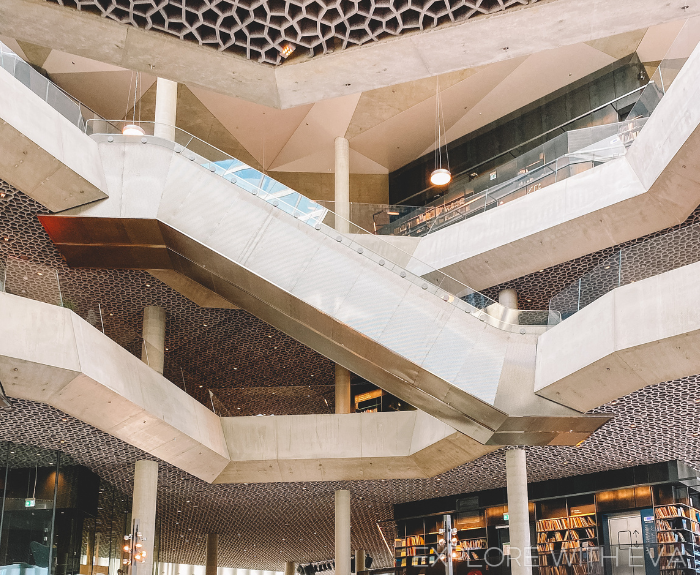



0 Comments